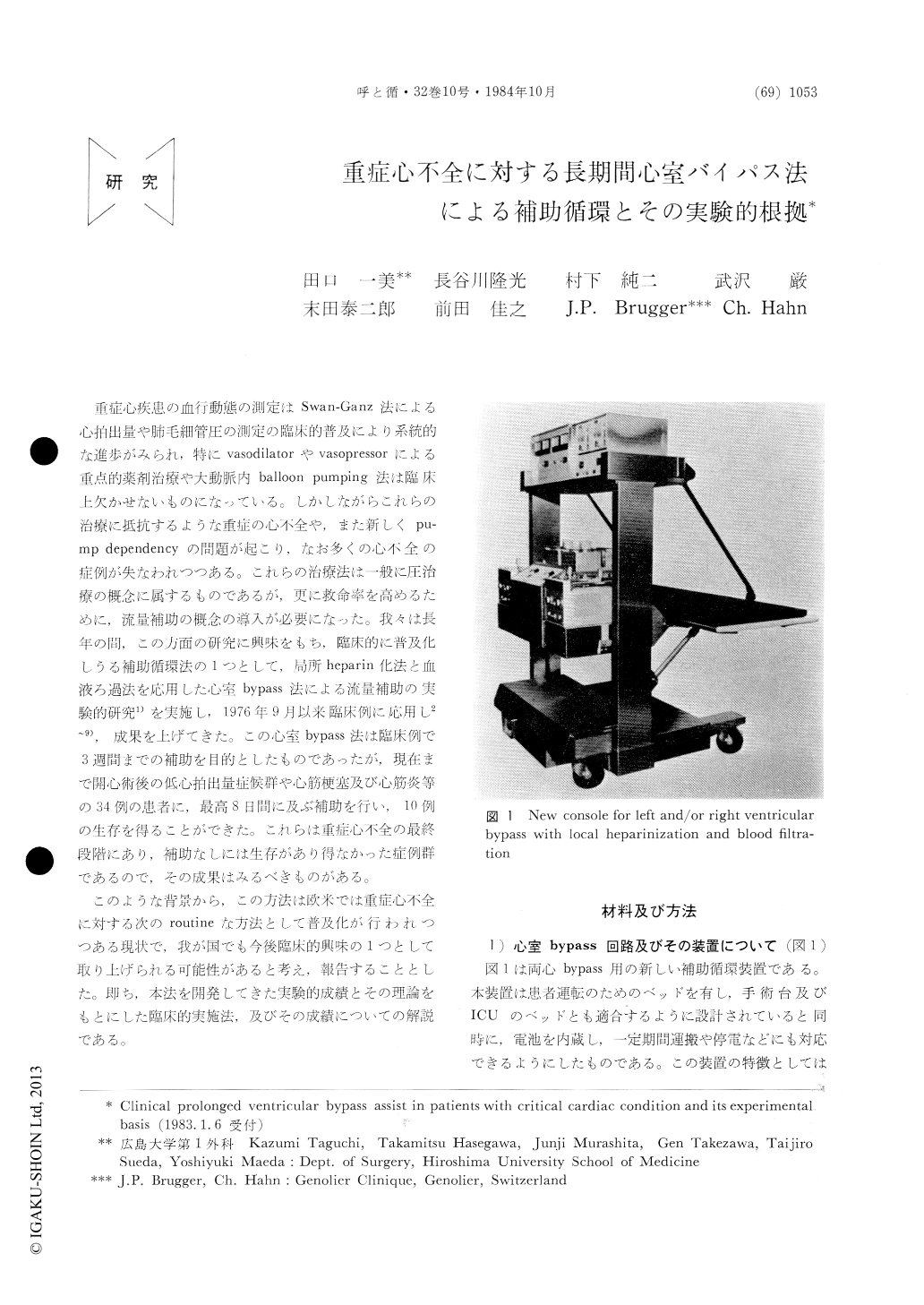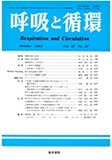Japanese
English
- 有料閲覧
- Abstract 文献概要
- 1ページ目 Look Inside
重症心疾患の血行動態の測定はSwan-Ganz法による心拍出量や肺毛細管圧の測定の臨床的普及により系統的な進歩がみられ,特にvasodilatorやvasopressorによる重点的薬剤治療や大動脈内balloon pumping法は臨床上欠かせないものになっている。しかしながらこれらの治療に抵抗するような重症の心不全や,また新しくpu—mp dependencyの問題が起こり,なお多くの心不全の症例が失なわれつつある。これらの治療法は一般に圧治療の概念に属するものであるが,更に救命率を高めるために,流量補助の概念の導入が必要になった。我々は長年の間,この方面の研究に興味をもち,臨床的に普及化しうる補助循環法の1つとして,局所heparin化法と血液ろ過法を応用した心室bypass法による流量補助の実験的研究1)を実施し,1976年9月以来臨床例に応用し2〜9),成果を上げてきた。この心室bypass法は臨床例で3週間までの補助を目的としたものであったが,現在まで開心術後の低心拍出量症候群や心筋梗塞及び心筋炎等の34例の患者に,最高8日間に及ぶ補助を行い,10例の生存を得ることができた。これらは重症心不全の最終段階にあり,補助なしには生存があり得なかった症例群であるので,その成果はみるべきものがある。
このような背景から,この方法は欧米では重症心不全に対する次のroutineな方法として普及化が行われつつある現状で,我が国でも今後臨床的興味の1つとして取り上げられる可能性があると考え,報告することとした。即ち,本法を開発してきた実験的成績とその理論をもとにした臨床的実施法,及びその成績についての解説である。
Purpose: A long term expriment of transapical left ventricular and biventricular bypass was con-ducted in 40 calves and then clinically applied to 34 patients with intractable cardiac failure.
Method: An extracorporeal circuit with pump-ing, 1) between LV and aorta, and 2) between RA and PA, with blood filter and roller pump under local heparinization was performed. The console was designed having 1) automatic pumping con-troller with Doppler air bubble detector and with negative pressor detector in withdrawal side, 2) computerized detection of blood filter clotting, 3) local heparinization lines, and 4) specially designed ventricular cannula coated with Polyurethane.
Results: 1) experimental bypass with a flow rate equivalent to 30-85% of the cardiac output meas-ured prior to bypass was maintained for 3-50 days. 94% of animals survived. 2) No bleeding or throm-boembolic problems in experimental animals was observed. 3) In clinical patients flow was controlled to achieve maximal flow rate up to 100% in the initial stage or supporting and gradually decreased to 30-40% of chronic support. 4) Total of 34 patients with myocardial infarction, cardiac surgical cases, 34 patients survived. 6) Almost half of the patients could be successfully weaned off from bypass.
Conclusion: The bypass technique described here was proven to be a important support for a certain number of patients with advanced cardiac failure.

Copyright © 1984, Igaku-Shoin Ltd. All rights reserved.


